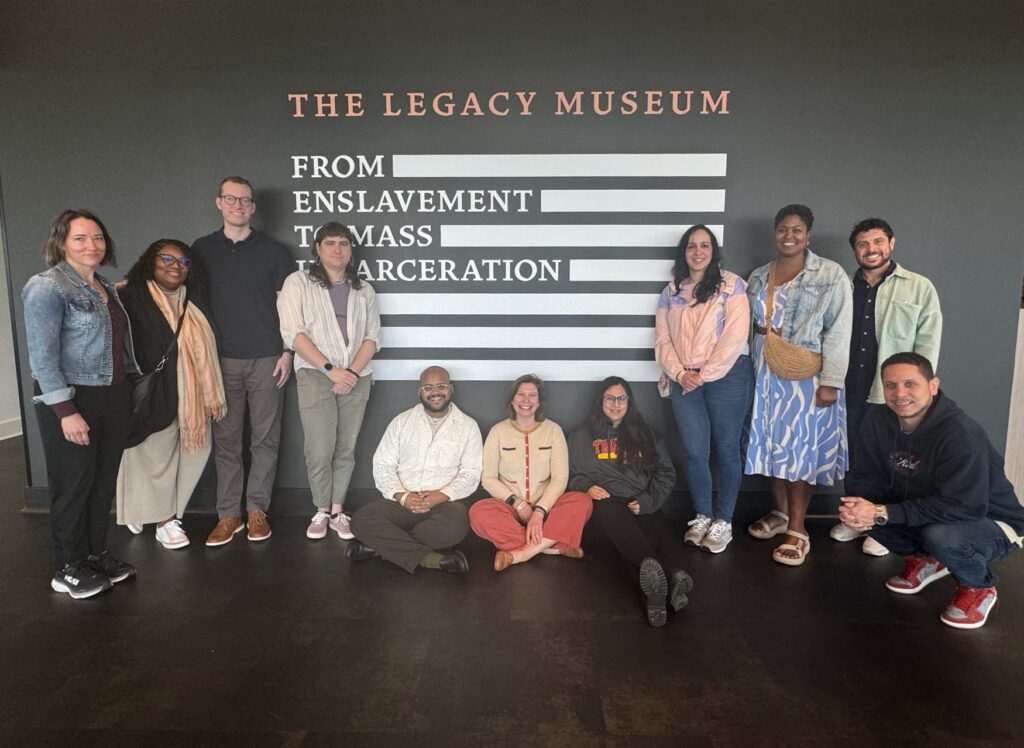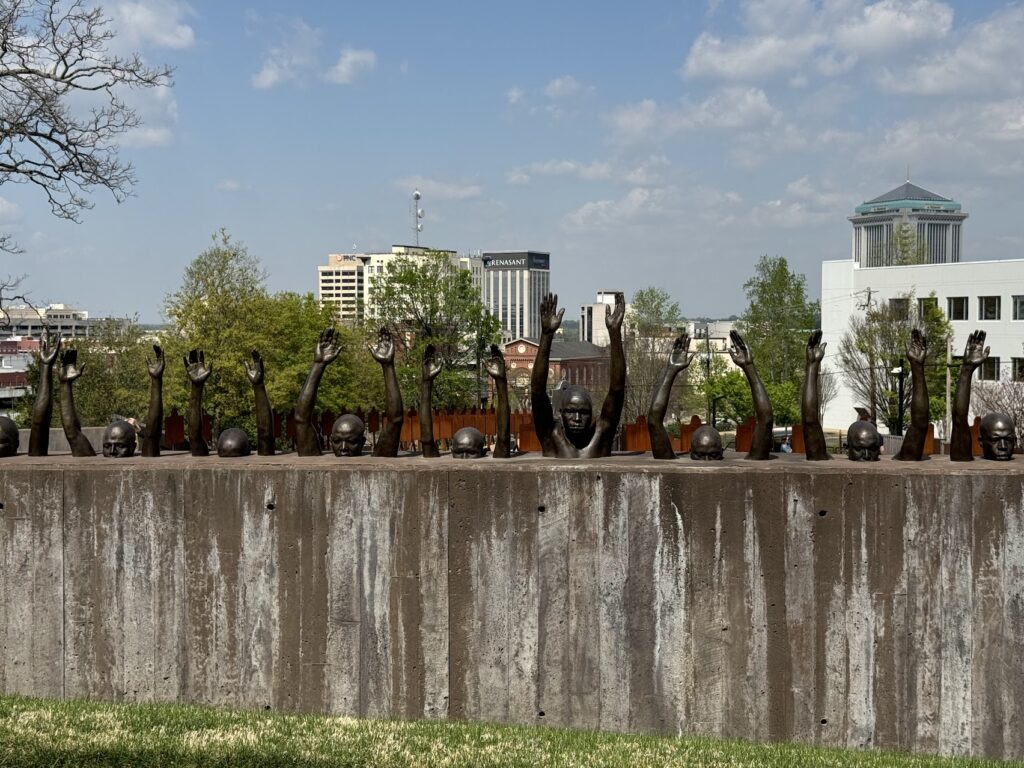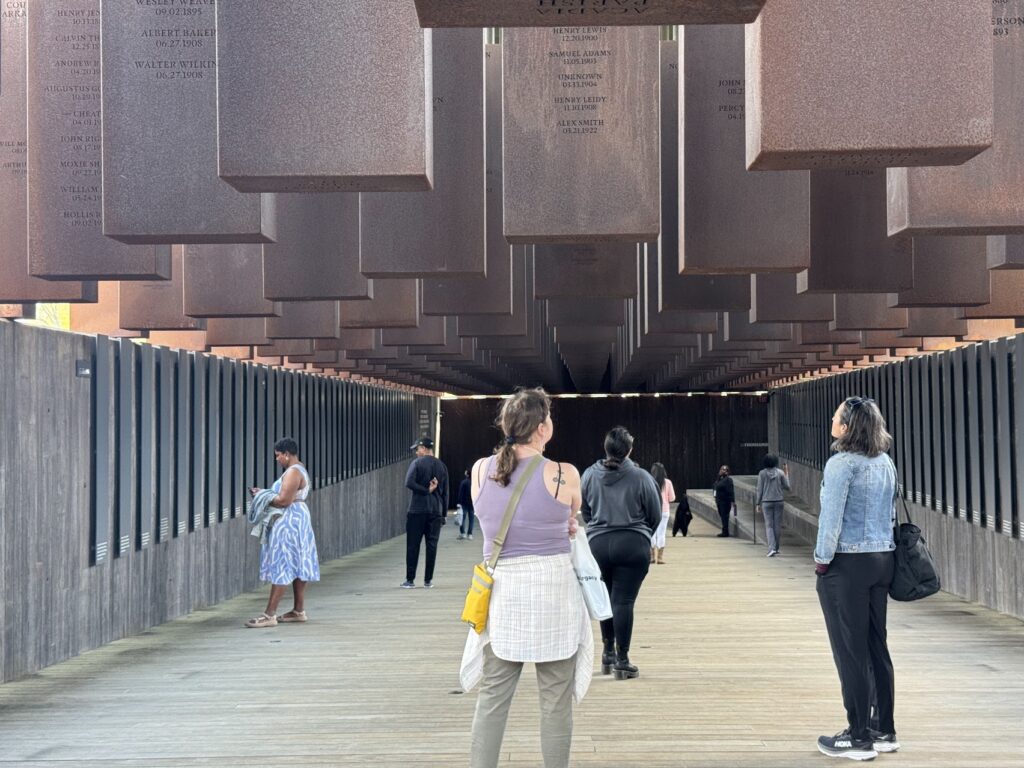On October 18th, 2021, grantee/movement partners of the Andrus Family Fund, Surdna Foundation, Wellspring Foundation, Youth First State Advocacy Fund, Communities for Just Schools Fund and the Visionary Freedom Fund were invited to attend a convening entitled, “Speaking Truth to Power: Narrative Change for Youth Power Building.” When discussing narrative change we were guided by Narrative Initiative’s definition:
A narrative reflects a shared interpretation of how the world works. Who holds power and how they use it is both embedded in and supported by dominant narratives. Successful narrative change shifts power as well as dominant narratives.
The convening gathered our nation’s most influential racial justice movement narrative change makers as they discussed the various strategies they employ in their respective work. Through a series of short TED-talk like presentations, organizers, narrative changemakers, journalists, strategic communications experts, filmmakers, screenwriters/producers, and cultural/art strategists shared their approaches to advancing racial justice.
Presenters included: Color of Change, PopCulture Collaborative, Constellations Culture Change Fund, Center for Cultural Power, Opportunity Agenda, Intelligent Mischief, PopShift, Revista Etnica, Colectivo Ile, SOUL Sisters Leadership Collective, Youth First, YR Media, Surdna Foundation, IllumiNative, Common Justice, Reframe Mentorship, Performing Statistics, Akonadi, Firelight Media, The Narrative Initiative, Padres y Jovenes Unidos, Black Futures Lab and MiJente.
The inspirations for this gathering included:
- Our movement partners’ desire to shape the public discourse and/or reclaim the framing and understanding of their core issues.
- The need for philanthropy to resource narrative capacity within organizations or collaborations to support groups to work towards shared desired outcomes.
- The opening of a continuous conversation about harnessing the power of narrative change to support power building within communities.
- The expressed desire from our movement partners to gather in a virtual space to hear from field experts, share best practices and uplift their needs to philanthropy.
Reporting Back: Building Power through Narrative
Our speakers shared that narrative change is rooted in shifting power and building power. Through the reshaping of stories, and identifying the locations where stories/words have the most impact, we collectively have the ability to reclaim, and define narratives that best serve the interests of our communities.
Amity Payne, Interim Director of Storytelling and Marketing at Color of Change posits “narrative strategy is a tool to restructure the way that people think and feel; and understand the ways that systemic racism causes harm to Black people. Narrative change must build power.”
Joseph Phelan of Reframe offered that we must move beyond tactical responses and develop strategic communications that support narrative power so we can start to shift the field. Strategic communications is defined as “consistently, persistently saying the right thing to the right people at the right time to mobilize social power and advance your narrative so you can accomplish short-term objectives and set up long-term victories.” This allows us to move past reactionary responses and think about the ways long-term narratives help move the needle towards justice. Again, narrative is about power-building for the purpose of creating change across time. Furthermore, he offered that diverse movements need to move in coordination and in collaboration in order to be effective. This work takes time and resources.
Supportive and Harmful Narratives
In 2020, we witnessed the “defund the police” narrative used to call for the reallocation of policing resources back into community stewardship and programs of care. This call was made across the nation and, as a result, we witnessed victories in the removal of police from schools in several districts across the nation and a ballot initiative in Minneapolis that called for disbanding the police force in the aftermath of the murder of George Floyd. Simultaneously, we witnessed a national push back on localized efforts to defund police, and the weaponization of critical race theory in schools teaching history and civics. In 2020 we also witnessed the rise of harmful narratives and effective deployment of narrative infrastructure and institutions from the right, which catalyzed abortion bans, raising white supremacist violence, anti-trans legislation, the rollback of voting rights, and a lack of adequate responses to the COVID-19 pandemic in Black and Indigenous communities.
These real life victories and losses are examples of:
- How narrative efforts create change and are always already shifting power in all directions
- And, the importance of crafting accessible strategic messages that build long term narratives, effectively capture hearts and minds, and move people to action to create change.
Arts and Culture as Critical Narrative Changemakers
The convening also gathered leaders from the cultural sector to share ways that organizers are working hand-in-hand with artists to create immersive art experiences such as No Kids in Prison and support the coordinated efforts of the Pop Culture Collaborative to shift the stories that are consumed by mainstream America. Cultural leaders reminded us that the artist and cultural workers are vital designers of narrative infrastructure and critical deployers of narrative. Their contributions are often critical to organizing and power building yet underfunded or construed as tangential.
Artistic work can help catalyze the imagination and build understanding and investment in a vision for change that resonates and compels people into taking action to construct new solutions to systemic racial justice problems. To do so, we must use narratives that align and contend for the hearts and minds of many people and move us into new possibilities.
State of Narrative Power + Infrastructure in Our Communities
A key strategic theme that arose is the importance of meeting people where they are. This may mean defining your issue and busting myths on TikTok and other social media platforms, using cultural programming to connect hearts and minds, hosting podcasts, leaning into relational organizing techniques or educating those in the writer’s room to shape narratives in mainstream media. The goal is to amplify your message by identifying the most impactful location and messenger.
Movement partners shared that their narrative building needs are vast and often unmet. Many identified the need for consolidation of a shared narrative and coordinated dissemination. Access to opportunities to train and increase skills, along with resources, are needed in order to effectively integrate this request into the larger youth serving field. Community mapping is needed to support this work — who is doing what and where so that we can identify the gaps and move in strategic alignment. Additionally, it will be necessary to determine how to more effectively use data to tell stories that shift hearts and minds in order to support policy change. Rinku Sen shared that more impactful narrative strategies highlight the change or solutions and signal where these changes are already taking place, instead of hyper focusing on the data that reinforces what is already wrong. How we partner with cultural workers to amplify the messages they identify as key to movements will be an important component of the work ahead.
Narrative change is about coordination and collaboration. Coordinating across sectors and movements will take time and resources.
Call to Action
Narrative change infrastructure for power building is critical to the work of changing hearts and minds in our communities. It will also be essential to sustaining the change of which we aspire.
Our movement partners have shared that this body of work — a necessary limb of organizing, advocacy, and policy work — has been underfunded and under-resourced, leaving communities to struggle unnecessarily.
What Can Funders Do?
- Philanthropy can respond to the call by listening, resourcing and amplifying narratives set forth by organizations and movements. Leveraging philanthropic relationships with power brokers or existing philanthropic communications efforts to highlight or reinforce the narratives emerging from movement partner organizations is critical.
- Make general operating grants (unrestricted dollars), offer capacity dollars and support for grantees, make room for support offered by cultural workers, artists, narrative change makers and strategists as integral to long-term power building.
- Support the youth justice and child welfare field to map narrative infrastructure and initiatives currently in existence. Help organizations identify who exists, what efforts they are currently engaging in, what is missing and which regions have higher resourcing needs or abundant investment opportunities.
- Leverage existing funding infrastructure like funder tables or donor collaboratives to invest in a narrative change strategy that is supportive of, and in sync with, existing movement partner organizations.
- Directly fund frontline groups to bring on full time strategic communications directors, development staff, cultural or artistic, or other narrative strategy leaders who are expert in embedding a power building approach through narrative in the organization’s policy, organizing, fundraising, and strategy development goals. Support groups to learn, experiment, collaborate, and integrate narrative power building with existing narrative change organizations.
Below is a short list of organizations leading narrative change work or accounting for narrative change within organizing and policy work (listed in no particular order):
Youth Justice
- Youth First State Advocacy Fund
- Visionary Freedom Fund
- Funders Collaborative on Youth Organizing
- Communities for Just Schools Fund
- YR Media
Racial Justice
- Color of Change
- Black Futures Lab
- IllumiNative
- MiJente
- Advancement Project
- Constellations Culture Fund
- Beloved Fund
- Art for Justice Fund
- ReFrame Mentorship
Narrative Movement Builders and Content Producers
- Reframe Mentorship
- Narrative Initiative
- Firelight Media
- Op-Ed Project
- Pop Culture Collaborative
If you are a funder and would like an introduction to any of these groups or would like to strategize or collaborate on narrative change investments, please reach out to info@affund.org.








